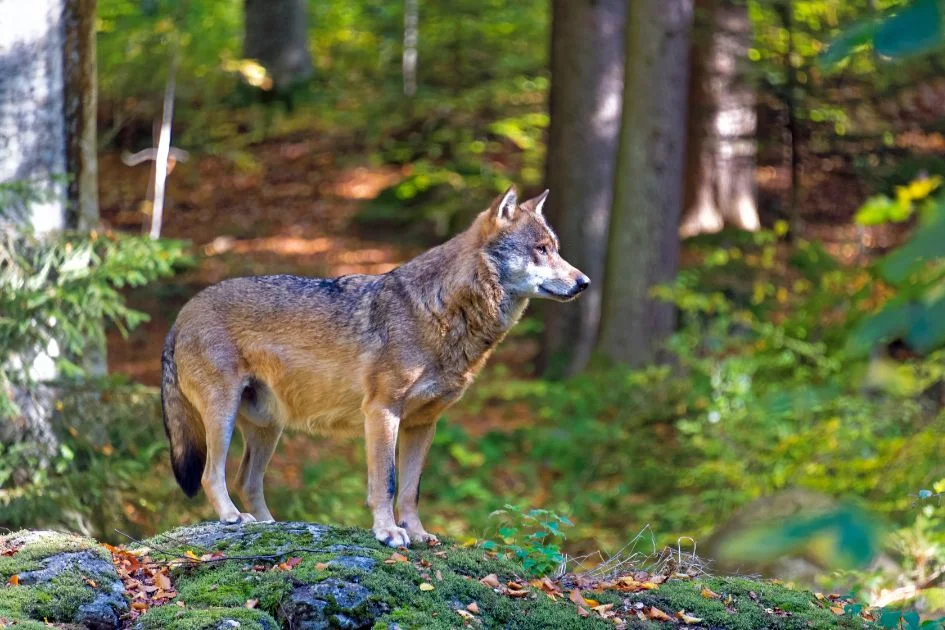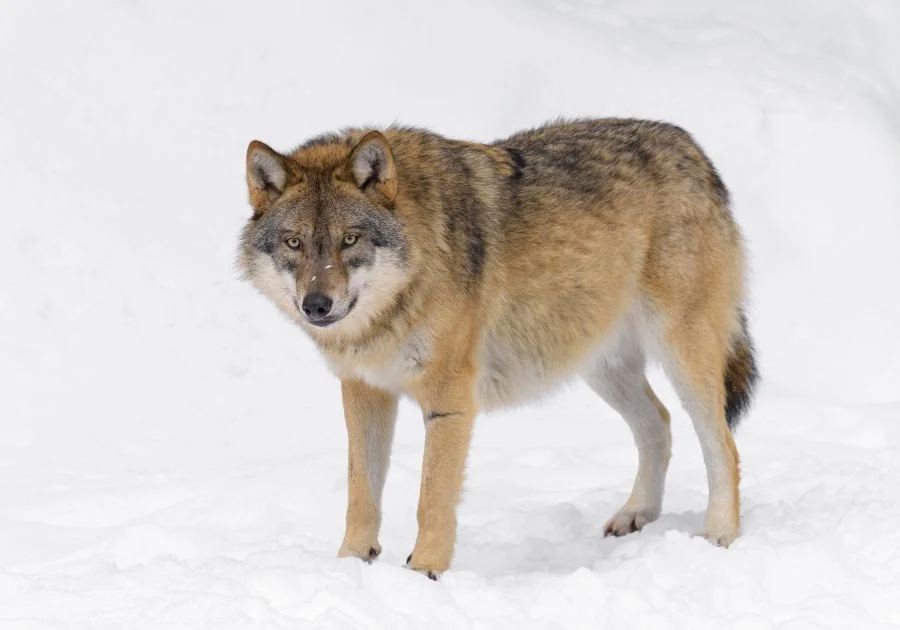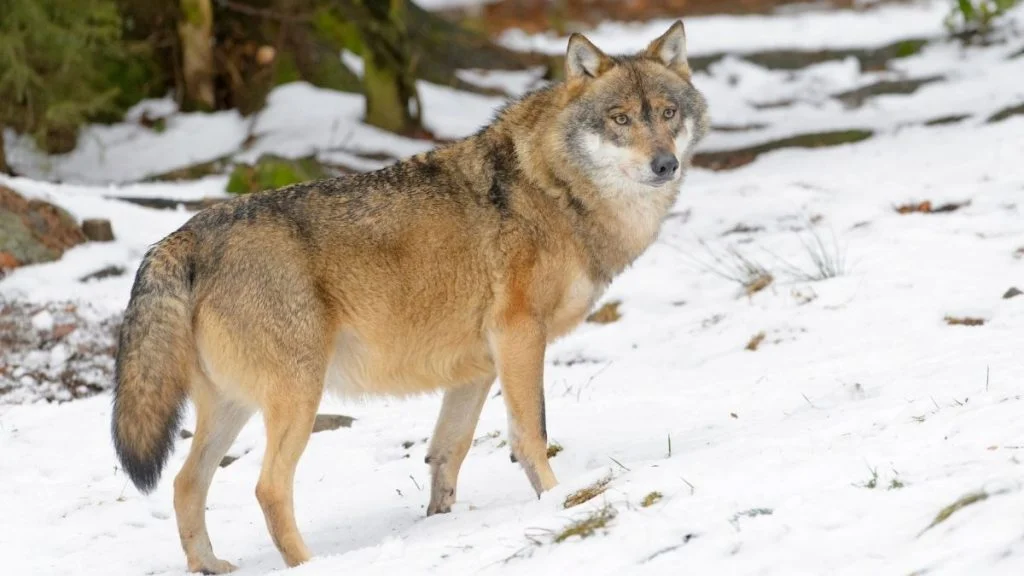In the past, the Northeastern United States’ woodlands were home to the gray wolf.
By preserving trophic structure and stability through predator-prey dynamics, this species profoundly impacted the ecosystem.
Since then, it’s been observed that Vermont is blessed with rich wildlife with various animal and insect species. However, as of now, are there wolves in Vermont wildlife?
Wolves are rare in Vermont as they were exterminated in the mid-1800s due to continuous hunting and slaughtering by bounty hunters and ranchers.
Although individual wild wolves have wandered into the northern U.S., wolf howls have been largely silent for over a century.
Read on to find out more about wolves in the northeastern United States.
Are There Wolves in Vermont Wildlife?
Wolves used to be the biggest wandering carnivore in North America. The gray wolf was heavily populated in Vermont and other northeastern states.
Due to the destruction of most of their native habitat in Vermont at the end of the 19th century, when forests were removed for farms and plantations, they disappeared.
Thereafter, a $20 reward was placed on each wolf’s head at the same time by the government, which was determined to safeguard livestock.
The majority of reported wolves in Vermont now are coyotes. Hence, it would be challenging to distinguish between a huge coyote and a small- to medium-sized wolf because they can have similar body sizes.
Wolf migration to the Northeast U.S. is conceivable, though challenging. The Algonquin region, across the St. Lawrence River, is home to the closest wolf areas.
More on Gray Wolves

Appearance and Features
Gray wolves are named as a result of the hue of their shaggy, gray fur punctuated by flicks of yellow and red. Their fur has a somewhat “washed-up” appearance.
Gray wolves weigh between 75 and 125 pounds as adults. In exceptional conditions, male gray wolves can grow to reach as much as 175 pounds, making them bigger than females. They have shoulder lengths from 27 to 32 inches.
When standing straight, the four to five-inch-long fur in their mane gives them the appearance of being taller.
From the bridge of the nose to the tail, a gray wolf can measure somewhere around 50 and 70 inches long. The width of its tail is one-third of this measurement.
A wolf’s torso is slimmer, and its legs are longer than a huge dog’s. As a result of their thin chests, their left and right feet are more closely spaced apart than a dog’s.
Behavior
Wolves express themselves in their communication through body posture, scent tagging, howling, barking, and growling. Their discourse focuses a lot on maintaining the pack’s social structure.
A wolf may whimper, tuck down its tail, lay onto its back, lick the face of another wolf, or stoop to demonstrate its submissiveness to that animal.
A wolf will snarl or tilt its head back to indicate that it is challenging another wolf.
Barking is a form of warning, and howling is a form of long-distance transmission used to reunite a pack and keep outsiders at bay.
Lifestyle
Wolves are pack animals. The majority of packs include four and nine members, although they might have as few as two wolves or as many as fifteen.
A pack may frequently grow to 30 members before some split off to search for new territory and start their packs.
Both a male and a female caste exist inside the pack. Males and females alike are subordinate to the alpha male in the pack. Only the dominant male and female may reproduce.
When the young individuals are three years old, they get the option of staying with the pack or going off to find their territory.
The new region might be nearby if the prey is abundant. In some places, young adults travel great distances in search of new lands.
Typically, wolves give birth in dens. They weigh roughly one pound at inception and can’t hear or see. Around six weeks after birth, the pups are fed.
Meat is ingested by older wolves and brought back to the den for their babies. The puppies have a filling supper following the adults’ regurgitation of the food.
Every few months until autumn, when the pack no longer resides at den spots, the mother wolf shifts her pups to new den locations.
Wolves typically live between 8 and 13 years in the wild. They are known to survive up to 15 years in captivity.
Diet
Being carnivores, wolves favor eating large hoofed creatures like caribou, moose, deer, and elk.
Additionally, they pursue smaller animals, including hares, rats, and beavers. Adults may consume 20 pounds of beef in one sitting.
Range
The gray wolf occupied more than two-thirds of the US throughout its former range. The current distribution of gray wolves includes the entire Northern Hemisphere.
Wolves can survive in various environments, including arctic, forests, woodlands, grasslands, and deserts.
Where Can Wolves Be Found?

North African, European, Asian, and American continents are all home to wolves.
Although they frequently live in remote wilderness locations, red wolves prefer to live in wetlands, coastal grasslands, and woodlands.
Eastern wolves, once present in the northeastern U.S., are now only present in southeastern Canada. Studies suggest that there are only one wolf species in the United States — the gray wolves.
According to research, gray wolves and coyotes may have been crossed to produce red and eastern wolves.
Are Wolves Protected in Vermont?
Given the threat wolves represent to cattle and the widespread phobia of the creatures, it would be difficult to win public backing for such a campaign.
Currently, the list of endangered and threatened animals of Vermont doesn’t include the gray wolf.
Despite extensive attempts, it has been impossible to find the species, and there is little chance that we will ever find it again in the region.
The state does not currently have any wolf protections, a strategy to deal with the possibility of a wolf comeback, or a strategy to aid recovery.
The Vermont Natural Heritage Inventory, a division of the Vermont Fish & Wildlife Department, Vermont Agency of Natural Resources, compiles a list of the state’s exceptionally rare creatures.
The officially recognized source for information on rare, imperiled, and endangered animals are the Vermont Natural Heritage Inventory.
This document lists the wolf as one of the “Species of Highest Preservation Concerns” determined by the Vermont Wildlife Action Plan. One thing to keep in mind is that this classification does not indicate legal rights.
Wolves previously roamed all of Vermont, but their eradication started soon after European arrival. In this state, there are no recognized wolf species at the moment.
But wolves might relocate to this region because Canada has a healthy wolf community nearby.
While wolf reintroduction into Vermont has been advocated for and researched by private organizations, there are currently no plans to do so by the U.S. Fish and Wildlife Service.
What Large Predators Live in Vermont?
The eastern coyote (Canis latrans) is the biggest predator in Vermont. Because it is a hybrid of a coyote and a wolf, this coyote is bigger than its western relative.
It is also way calmer and usually only “yaps” around dawn and nightfall. It feeds on small mammals and rodents.
Most of Vermont’s coyotes stay in forested areas and don’t often interact with humans.
Additional predators in Vermont include the Canada lynx (Lynx canadensis) and eastern bobcats (Lynx rufus).
Although bobcats are common, it is rare to observe one due to their extreme shyness. The Canada lynx is a native Vermont big cat critically endangered in the state.
FAQs
How many gray wolves are there in the world?
It is impossible to estimate the precise number of wolves in the world.
However, the gray wolf population has been estimated at 200,000 and 250,000 worldwide, with most of the species living in the U.S. and about 50,000 gray wolves surviving in Canada.
Final Thoughts
Until they were eradicated by tenacious anti-wolf efforts and the destruction of natural forests in the last 1800s, wolves inhabited the Northeastern state of Vermont.
In the past 100 years, the area has experienced fruitful forest development, restoring suitable wolf habitats.
Researchers are still exploring the likelihood of wolves naturally recolonizing the area and returning to the environment.
The idea of wolf reintroduction to Vermont wildlife has received support from private organizations, but the U.S. Fish and Wildlife has no formal plans to do so.
Are there wolves in:
Featured Image Credit: AndreAnita / Getty Images






